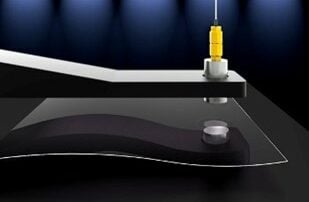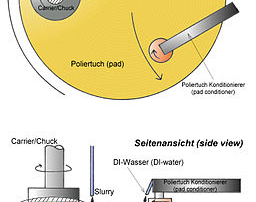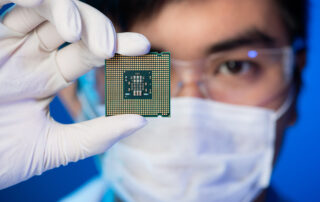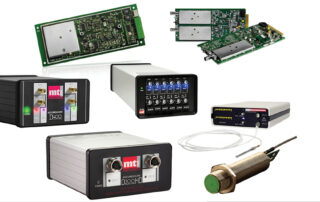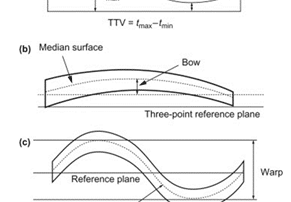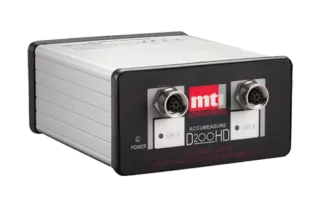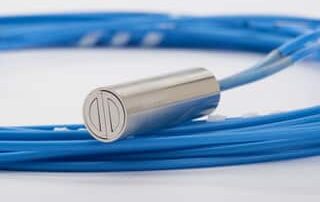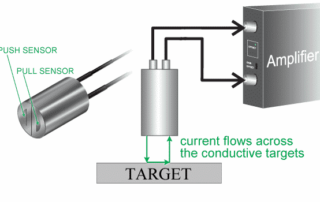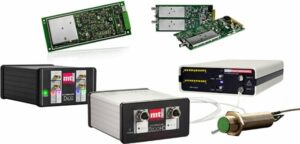Blogs
Using Capacitance Sensors for Non-Conductive Material Measurement
Non-Conductive Material Measurement with Capacitance Sensors Capacitance sensors are non-contact devices that can be used to obtain position, thickness, and dynamic measurements with a high degree of precision, accuracy, and resolution. Capacitive measurement is used with electrically-conductive materials such as metals but can also be used to measure non-conductive materials such as glass, sapphire, and many plastics. Even if a non-conductive material is relatively inexpensive (such as closed cell foam), manufacturers want to avoid errors that can result in significant waste across high volumes. Importantly, capacitance measurement is also used with semi-insulating materials such as gallium arsenide (GaAs) and [...]
CMP and Capacitance-Based Semiconductor Wafer Measurement
Chemical mechanical polishing (CMP) uses chemical oxidation and mechanical abrasion to selectively remove material from semiconductor wafers in order to achieve very high levels of planarity. The planarity, or flatness, of these wafers is important for optical lithography, a microfabrication technique that produces integrated circuits (ICs) by transferring a geometric pattern from a photomask to a light-sensitive chemical photoresist. Also known as photolithography or UV lithography, optical lithography can produce a geometric pattern on a thin film or directly onto the substrate. Semiconductor Wafer Measurements: Flatness and Shape During optical lithography, variations in wafer flatness must be smaller than [...]
MEMS and Capacitance-Based Semiconductor Wafer Measurement
MEMS Technology and Capacitance-Based Wafer Measurement Micro-electrical-mechanical systems (MEMS) are tiny devices that house electrical and mechanical components on a single silicon chip or integrated circuit (IC). They integrate mechanical structures with electronics that are normally fabricated with complementary metal-oxide-semiconductor (CMOS) technologies. In addition to miniaturization, the benefits of MEMS include expanded functionalities at lower cost and with improved performance and reliability. With MEMS devices, critical physical dimensions range from smaller than one micron (µ) to larger than several millimeters (mm). In complex systems, multiple moving elements may be controlled by integrated electronics. Examples of the mechanical components in [...]
MTI Instruments’ Accumeasure HD System Proven to Be Highest Resolution Capacitance System in the World
ALBANY, N.Y., April 9, 2021 /PRNewswire/ — MTI Instruments, Inc. (“MTI Instruments”), a wholly-owned subsidiary of Mechanical Technology, Incorporated, (NASDAQ: MKTY), announced today that its Accumeasure HD system technology has been proven to measure distances as small as 69 picometers, setting a new bar for capacitance systems. The results were recently published in a white paper by Kevin Harding of Optical Metrology Solutions. Harding’s white paper can be accessed on MTI Instruments’ website. Harding’s independent study confirmed the findings of an internal experiment by MTI Instruments that concluded the Accumeasure HD system can provide picometer-level accuracy when used with [...]
Measure Wafer Bow, Warp and TTV with Capacitance
The flatness of silicon wafers used to manufacture integrated circuits is controlled to tight tolerances to help ensure that the whole wafer is sufficiently flat for lithographic processing. To ensure your wafer manufacturing process is within tolerance, you need to measure the wafers being produced. Various measurement techniques exist to verify process tolerances and eliminate expensive scrap wafers. Non-contact capacitive sensing is a highly precise and cost-effective means to measure wafer flatness, bow, warp, and total thickness variation (TTV). MTI Instruments’ Proforma 300i and 300iSA systems use capacitance sensors to improve yields while reducing costs through better dimensional control of [...]
Direct Digital Outputs for Precise Sensor Measurement Without Programming
MTI’s Digital Accumeasure converts highly reliable capacitive electric field measurements into highly precise 24-bit digital readings. This digital capacitance displacement gauge interfaces with DASYLab, data acquisition (DAQ) software from Measurement Computing with tools and functions for application development without programming. By interfacing MTI’s Digital Accumeasure with DASYLab, you can get precise sensor measurements without sacrificing speed, reliability, or ease-of-use. The Digital Accumeasure connects to DASYLab through a Modbus interface. Because MTI’s precision measurement technology has direct digital outputs, you can directly import digital displacement values instead of lower-resolutions analog values. In other words, instead of converting measurements to analog [...]
Capacitance Probes: Five Things You Need to Know
Capacitance probes are non-contact measurement devices with a capacitance sensor inside a protective shell or housing. They use cables and connectors to integrate with amplifiers and are an important part of capacitance measurement systems. By using capacitance, engineers can measure physical parameters such as vibration, pressure, liquid levels, metal contamination, and seismic activity – just to name a few. There’s a lot to know about capacitance probes, but five key facts to understand. Capacitance probes are highly accurate and very stable. They’re better than older devices and competing technologies. They require little calibration and support miniaturization and embedding. They [...]
Capacitance Sensors: Three Things You Need to Know
Capacitance sensors are precision measurement tools for process automation, quality control, and tool automation control. They’re used in a many different industries and are suitable for virtually any application where accuracy is paramount. There’s a lot to know about capacitive sensors (as they’re sometimes called), but engineers need to start with three key questions. What are the parameters to specify when selecting a capacitance sensor? What are factors to consider when embedding a capacitive sensor in an industrial application? What is the future of capacitance-based measurement products? MTI Instruments has been providing U.S.-made capacitance sensor systems for over 50 [...]
Fiber Optic Sensors Help Stop Subway Shutdown
Fiber optic sensors will help keep commuters moving between Manhattan and Brooklyn this year and beyond. Recently, New York Governor Andrew Cuomo announced that New York City’s Metropolitan Transit Authority (MTA) would not close the L train tunnel for a planned 15-month repair project. Instead, the MTA will use technology-driven solutions to keep the tunnel open and operational for weekday riders. In a joint statement, a panel that included engineering experts from Columbia and Cornell explained that "The L Train Tunnel project gives us the opportunity to integrate technologies and methods that have never been used before in a [...]
3D Integrated Circuits Use Capacitive Sensing to Ensure Coplanarity
Three-dimensional (3D) integrated circuits (ICs) feature silicon wafers and dies that are stacked vertically for improved device performance. By using the Z-axis, 3D ICs can overcome the power and footprint limitations associated with two-dimensional (2D) integrated circuits. Yet 3D ICs need coplanar surfaces to contact all of the pads, pins, and pillars. To determine coplanarity, semiconductor manufacturers measure the angle and gap between two planes. Bonding tool actuators use these measurements to adjust components and ensure that all device pins and solder balls reside on the same geometric plane. This process, active parallelism compensation, promotes proper bonding without residual [...]

